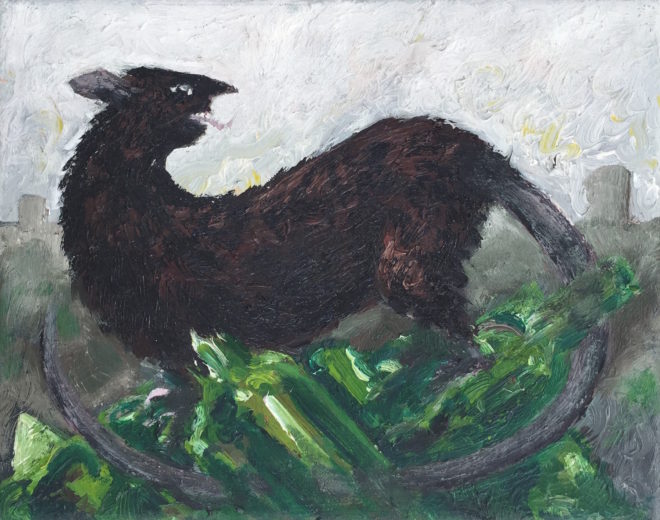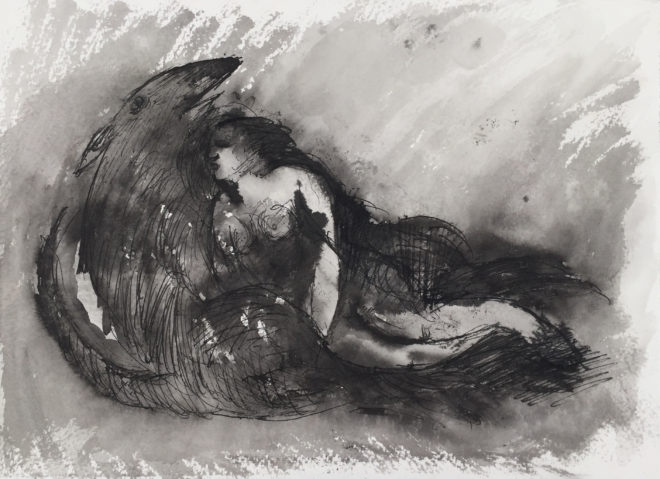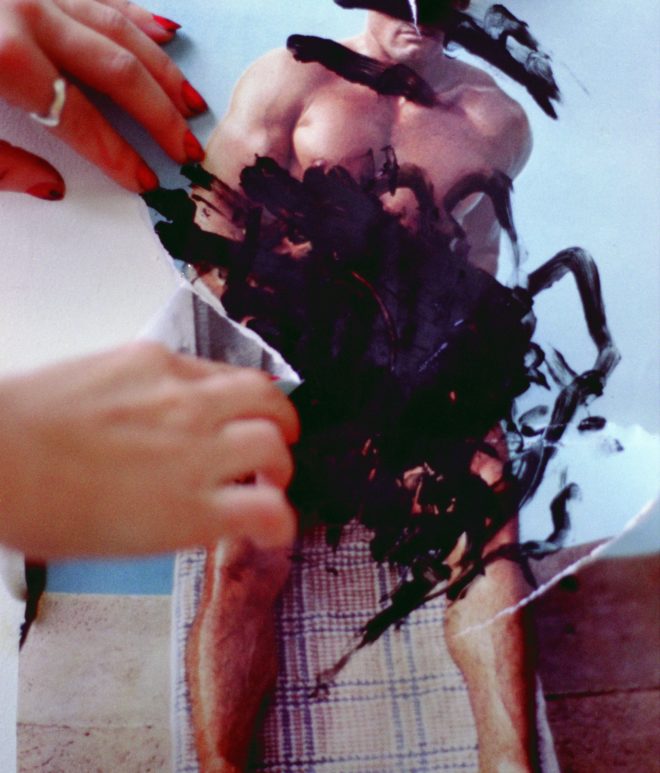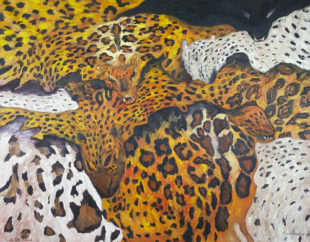Critic Lucy Lippard noted of Alexis Hunter: “Fetishism and a hint of S&M lurk just beneath the surfaces of Hunter’s photographs … Her rage at capitalism is focused upon the mass media which have, as Judith Williamson puts it, been ‘selling us ourselves’ for profit.”
The titles of Alexis Hunter’s works of art are pointed: Approach to Fear; Voyeurism; Violence: Destruction of Evidence; Identity Crisis; Effeminacy; Sexual Warfare; Masculinisation of Society; Oh No!; Dialogue with a Rapist. These were the ideas and themes that preoccupied her, explored from the 1970s onwards in a series of conceptual works using photography, film and text. The photographic Narrative Sequences were at the time shown at the Hayward, the ICA, the Sydney Biennale and various European museums. Her iconic image sequence of her hands burning silver platform shoes, Approach to Fear XIII: Pain – Destruction of Cause 1977, was acquired by Tate in 2013, shortly before her premature death from motor neurone disease in 2014.
Hunter focused on the female experience and reclaiming the gaze. The narrative sequences were extended with her direct interaction on and with photographic images, opening up thinking about the intersection of feminism, new technologies, and a disruptive epoch. She understood, and utilised the methods of, mass media – print and electronic. The confidence of her images articulated a sense of liberty deeply at odds with the predominant masculinity of the era. Experimenting with the new media of the time, Hunter’s images foreshadowed how technologies now mediate our desires and inner thoughts: they are eloquent harbingers of our Instagram era. They were also prescient in their understanding of the extreme individuation and manipulation of the consumer now saturating the world with sexual visual language.
Hunter’s work is held in, amongst others, the Collections of Tate, Scottish National Gallery of Modern Art, Arts Council of Great Britain, Verbund Collection of Feminist Avant-Garde Vienna, London’s Imperial War Museum, New Hall Art Collection at University of Cambridge UK, Te Papa Tongarewa Museum of New Zealand, and Auckland Art Gallery Toi O Tāmaki.
Renewed interest in historic feminist work allowed a younger generation to understand the potent achievements of that earlier generation of artists. Important exhibitions were mounted at Kunsthaus Zurich; ‘Live in Your Head: Concept and Experiment in Britain’ at the Whitechapel Gallery, London, toured to Portugal; ‘Work’ at Taxispalais, Innsbruck; ‘WACK! Art and the Feminist Revolution’ at MOCA, Los Angeles, toured to Washington and Vancouver. Lynda Morris of the Norwich Gallery, UK, curated a large exhibition of the Sequences works, ‘Alexis Hunter: Radical Feminism in the 1970s’, which travelled to Bunkier Sztuki, Kracow, Poland.
Alexis Hunter was born in New Zealand and, after graduating with Honours in Painting and History of Art and Architecture from The University of Auckland’s Elam School of Fine Art in 1969, she travelled to London where she joined the Women’s Workshop of the Artists Union while working in commercial film and animation. Her work brought her to prominence early and continued her moral and conceptual preoccupations in a well-developed painting and drawing practice, then during the 1980’s Hunter became Visiting Lecturer at the School of Visual Arts, New York and Byam Shaw in London; then Assistant Professor of Art at the University of Houston, Texas. She also curated various exhibitions on painting and politics.








































